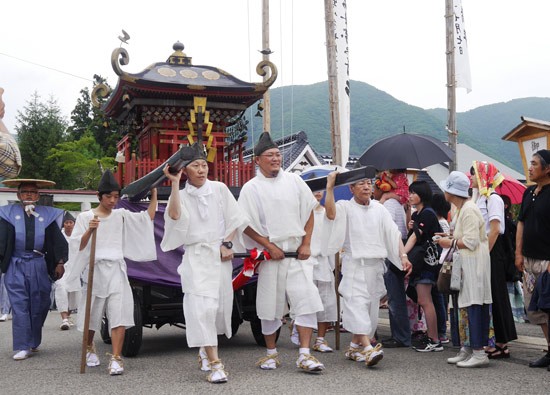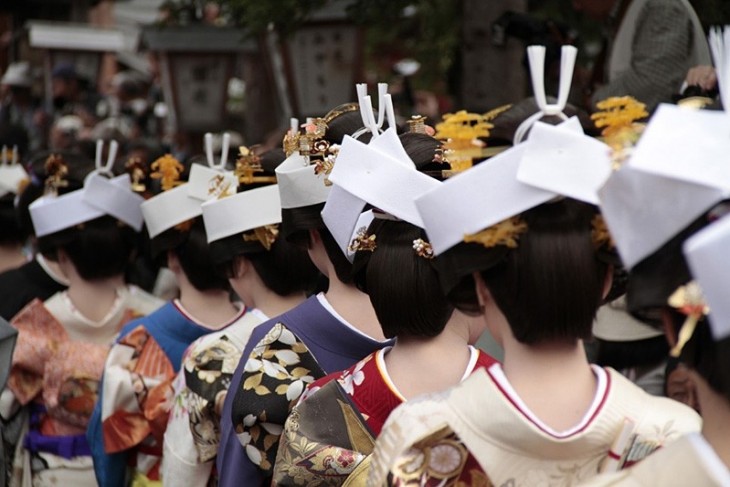
WHY IS THERE A GION FESTIVAL IN AIZU-TAJIMA?
The most famous Gion Festival takes place every year in Gion, Kyoto. Hundreds of years ago, elite families were moved to various areas around the country. One of these areas was Aizu-Tajima, in Minamia Aizu, Fukushima. The families that moved from Kyoto to Aizu-Tajima had young children who were heartbroken at having to leave their hometown and extended family.
Torn about how to appease their homesick, sad children, families decided to hold a traditional Kyoto festival - the Gion festival - in their new town.
Advisors were sent to Kyoto to learn the ins and outs of holding a Gion Festival (as well as to receive permission to hold it). After being granted permission and studying up, they returned to Aizu-Tajima, having been promised after Kyoto’s annual Gion Festival that real Kyoto Gion golden crowns would be brought to Aizu-Tajima for use in their own festival.

These crowns were to be used in the Aizu-Tajima children’s procession every year. Kyoto’s Gion Festival is earlier than Aizu-Tajima’s, so there was time for the transferral of these crowns. Although not considered a particularly special item in Kyoto, for the people of Tajima, these crowns were incredibly precious, because they signified the authenticity of their festival.
WHAT ARE FESTIVAL YATAI?
Each of the 4 areas of Aizu-Tajima owns their own festival stall, known as yatai (屋台). The stall of the west area is the oldest, dating from earlier than the 1830s, and is the only yatai to survive terrible fires that occurred in 1772 and 1774.
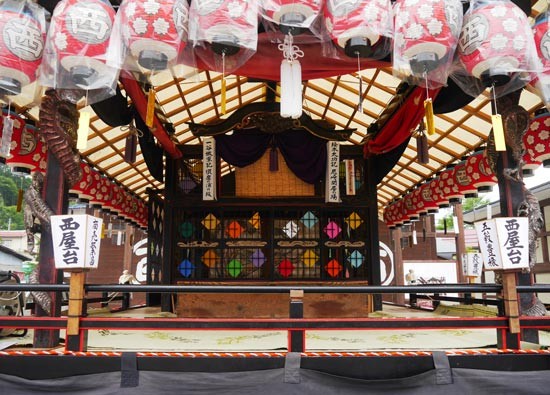
These stalls are considered to be spiritual, having the power to bless their area during festival time. They are used as stages for kabuki performances and play an integral part in the yatai ruckuses which occur between areas on the evening of July 23.
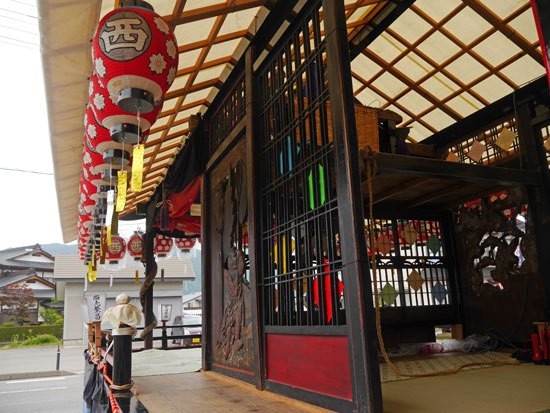
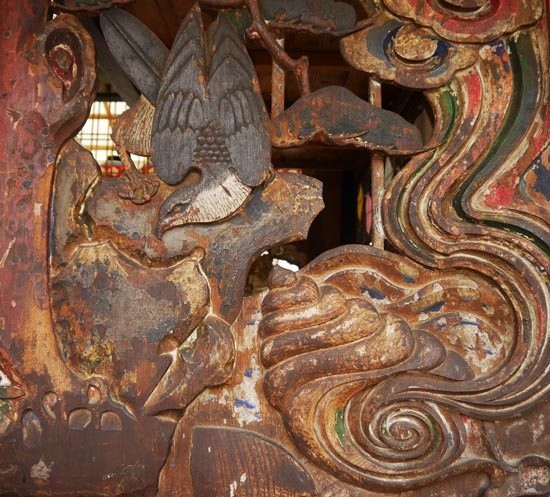
The west area’s yatai has beautiful architecture and carvings on the body of the stall.

The children of the town can ride on their own area’s yatai during the start of the festival, as their neighbours push it around. Older kids are given the responsibility of calling out festival chants from a megaphone in the back of the stall.
It is a great honour for kids to be given the responsibility of shouting festival chants, and younger kids feel jealous over being too young to do this!
CHANGING TRADITIONS
In days gone by, girls could not touch the shrine or be involved in kabuki performances, and only local people were allowed to participate in the festival, but these rules have been relaxed over time. However one rule hasn't changed: it used to be thought of as bad luck to look down at yatai from a 2nd floor window, as this would equate to looking down on the gods. Even now, this is really frowned upon!
MY FESTIVAL HIGHLIGHTS
KID’S KABUKI BY NIGHT
Children as young as elementary school year 2 perform in kabuki on top of yatai stands during the afternoon and late into the evening. Before the performances start, performers wait in the back of their respective yatai. I was amazed at how confidently the kids performed.
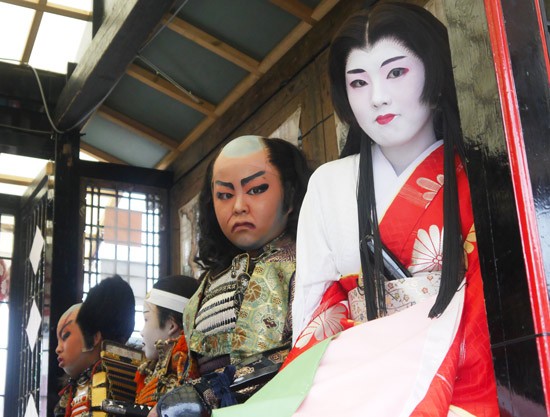
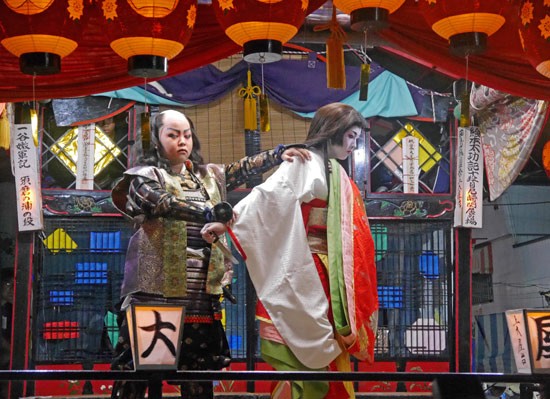
NANAHOKAI PROCESSION
I was really excited to see this procession and it did not disappoint!
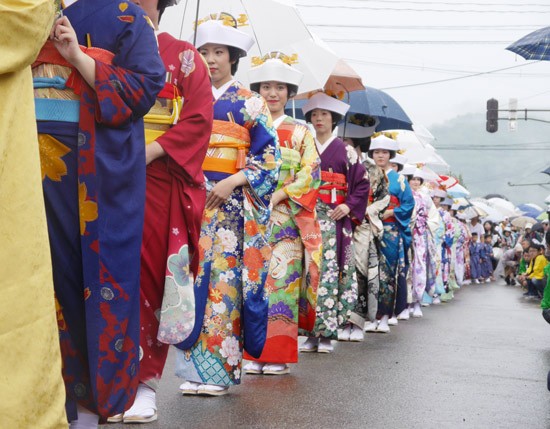
The Nanahokai Procession (七行器行列) takes place early on the morning of July 23. Beautiful women dressed in kimono are accompanied by men in kamishimo. The women accompany 7 offerings to the main shrine in the town, including sake, fish and rice.
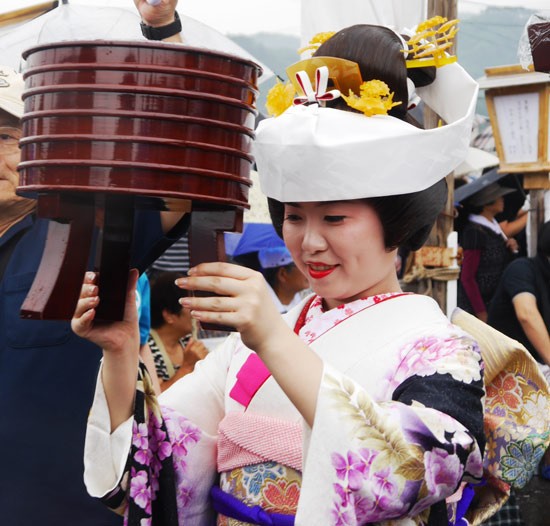
Unlike the kabuki, which is voluntary, the women to join the Nanahokai Procession are called upon in accordance with a rota of all the families in the area. Even if relatives move away, they are encouraged to return (with their spouses) to participate in the festival. Married women wear black kimono, and unmarried women have bold, bright patterned kimono.
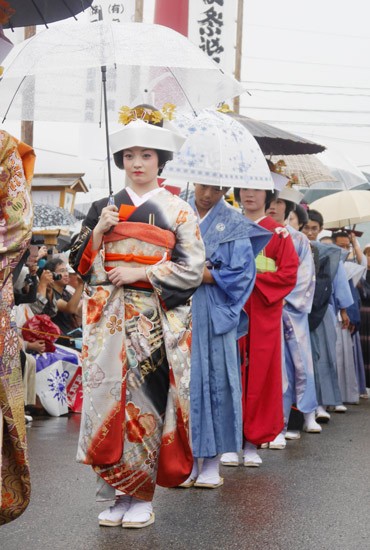
It was raining when I visited, but this didn’t impact the enchanting atmosphere of the procession.
In years gone by, only women from the town were allowed to join the Nanahokai Procession, but as a result of slow and steady depopulation, all are welcome to apply to walk in the procession – even English teachers who live in nearby towns!
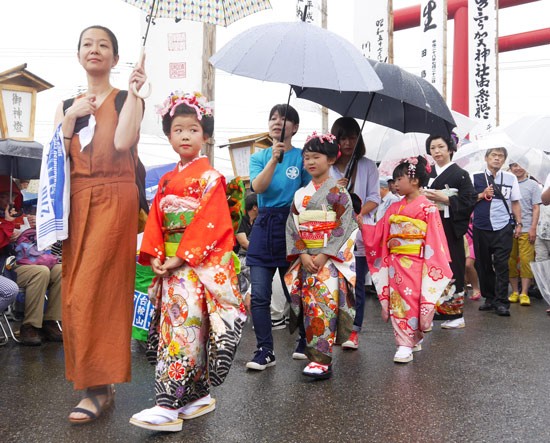
It wasn’t just the adults who shone during this procession. Have a look at the very cute kids in the photos below!
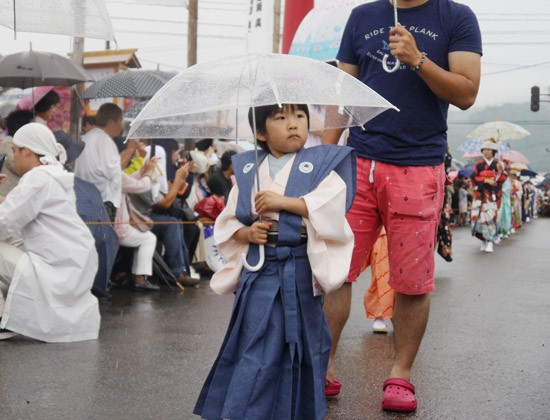
There were many photo opportunities, as the women walked slowly, and posed for photos after finishing taking the offerings to the shrine.

CHILDREN’S PROCESSION
As I wrote above, the children’s procession that takes place after the Nanohokai Procession includes replicas of crowns originally brought from the Kyoto Gion Festival every year for Tajima’s children to wear.
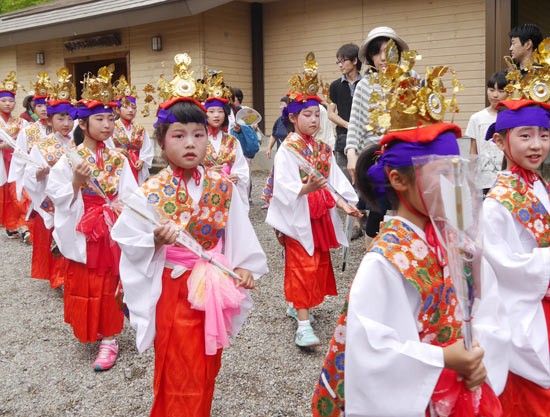
CHILDREN’S TAIKO DRUMMING
Local children perform in front of hundreds of people that gather to see the festival. Their drumming was really good and they were all adorable!
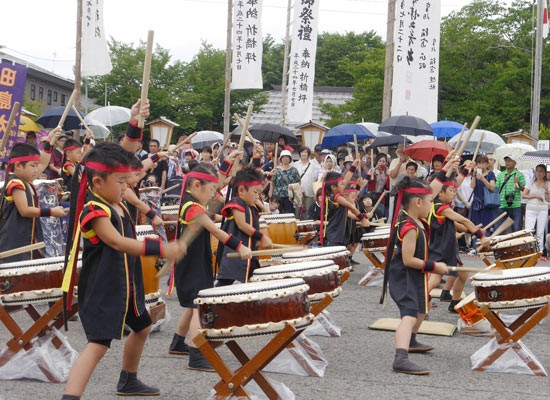
VISITING THE SHRINE
It is traditional to visit the shrine to pray, and drink doburoku to celebrate. Doburoku is a type of unfiltered sake, which continues to ferment upon drinking! Farming families used to make doburoku at home, but it became illegal due to taxing issues. Being able to drink it at festival festival time is an important tradition for local people! Due to driving, I couldn’t try doburoku unfortunately, but some Brits traveling through Japan really enjoyed it!
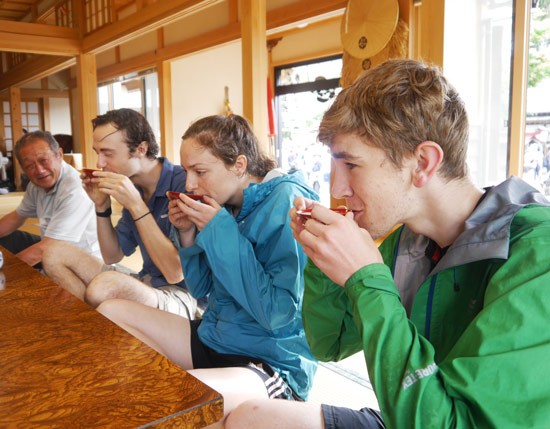
MIKOSHI PROCESSION
The mikoshi (portable shrine) of the town is brought out of the shrine after offerings are brought inside. This shrine blesses the areas it passes through, grants local people with good health, and wards off natural disasters.
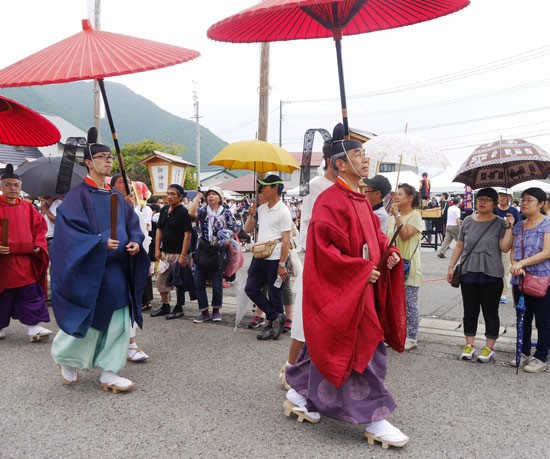
Aizu-Tajima’s Gion Festival was a fantastic two day trip for me! I didn’t get to see the full 3 days, but maybe I can next year! I definitely recommend it!
